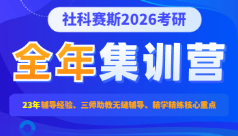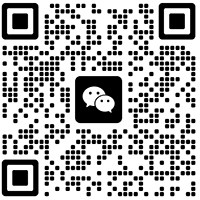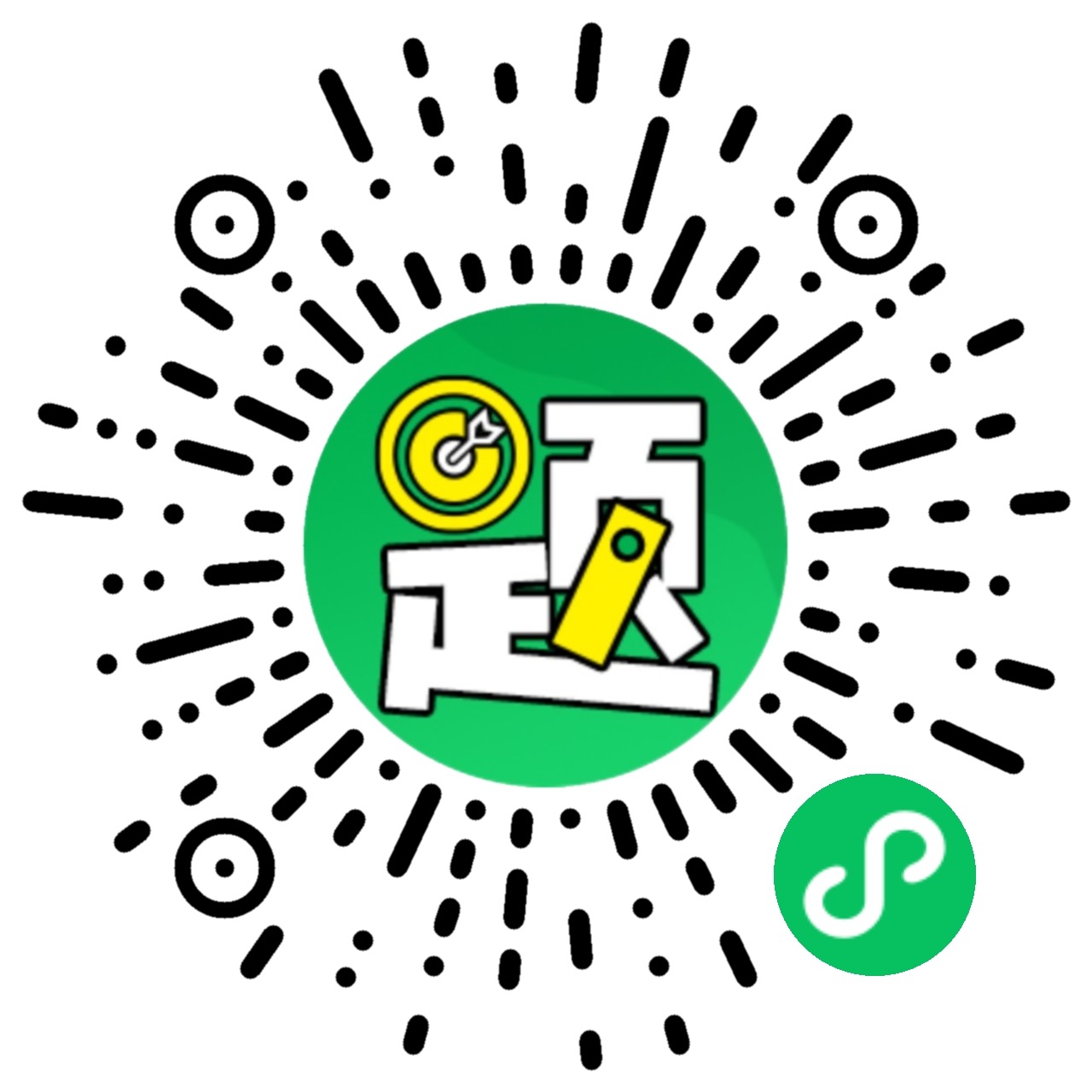天气转暖,正是备考英语六级的好时节,那么同学们英语六级复习的如何了呢?为了考过英语六级一定要多刷英语六级真题,所以社科赛斯考研网小编整理了2016年12月英语六级真题(第一套)内容
2016年12月大学英语六级考试真题(第1套)
Part I Writing (30 minutes)
Directions: For this part, you are allowed 30 minutes to write a short essay on invention. Your essay should include the importance of invention and measures to be taken to encourage invention. You are required to write at least 150 words but no more than 200 words.
Part II Listening Comprehension (30 minutes)
Section A
Directions: In this section, you will hear two long conversations. At the end of each conversation, you will hear four questions. Both the conversation and the questions will be spoken only once. After you hear a question, you must choose the best answer from the four choices marked A, B, C and D.
Then mark the corresponding letter on Answer Sheet I with a single line through the centre.
Questions 1 to 4 are based on the conversation you have just heard.
1. A. It tries to predict the possible trends of global climate change.
B. It studies the impacts of global climate change on people's lives.
C. It links the science of climate change to economic and policy issues.
D. It focuses on the efforts countries can make to deal with global warming.
2. A. It will take a long time before a consensus is reached on its impact.
B. It would be more costly to deal with its consequences than to avoid it.
C. It is the most pressing issue confronting all countries.
D. It is bound to cause endless disputes among nations.
3. A. The transition to low-carbon energy systems.
B. The cooperation among world major powers.
C. The signing of a global agreement.
D. The raising of people's awareness.
4. A. Carry out more research on it.
B. Cut down energy consumption.
C. Plan well in advance.
D. Adopt new technology.
Questions 5 to 8 are based on the conversation you have just heard.
5. A. When luck plays a role.
B. what determines success.
C. Whether practice makes perfect.
D. How important natural talent is.
6. A. It knocks at your door only once in a while.
B. It is something that no one can possibly create.
C. It comes naturally out of one's self-confidence.
D. It means being good at seizing opportunities.
7. A. Luck rarely contributes to a person's success.
B. One must have natural talent to be successful.
C. One should always be ready to seize opportunities.
D. Practice is essential to becoming good at something.
8. A. Putting time and effort into fun things is profitable.
B. People who love what they do care little about money.
C. Being passionate about work can make one wealthy.
D. People in need of money work hard automatically.
Section B
Directions: In this section, you will hear two passages. At the end of each passage, you will hear three or four questions. Both the passage and the questions will be spoken only once.After you hear a question, you must choose the best answer from the four choices marked A, B, C and D. Then mark the corresponding letter on Answer Sheet 1 with a single line through the centre.
Questions 9 to 12 are based on the passage you have just heard.
9. A. The stump of a giant tree.
B. A huge piece of rock.
C. The peak of a mountain.
D. A tall chimney.
10. A. Human activity.
B. Wind and water.
C. Chemical processes.
D. Fire and fury.
11. A. It is a historical monument.
B. It was built in ancient times.
C. It is Indians' sacred place for worship.
D. It was created by supernatural powers.
12. A. By sheltering them in a cave.
B. By killing the attacking bears.
C. By lifting them well above the ground.
D. By taking them to the top of a mountain.
Questions 13 to 15 are based on the passage you have just heard.
13. A. They will buy something from the convenience stores.
B. They will take advantage of the time to rest a while.
C. They will have their vehicles washed or serviced.
D. They will pick up some souvenirs or gift items.
14. A. They can bring only temporary pleasures.
B. They are meant for the extremely wealthy.
C. They should be done away with altogether.
D. They may eventually drive one to bankruptcy.
15. A. A good way to socialize is to have daily lunch with one's colleagues.
B. Retirement savings should come first in one's family budgeting.
C. A vacation will be affordable if one saves 20 dollars a week.
D. Small daily savings can make a big difference in one's life.
Section C
Directions: In this section, you will hear three recordings of lectures or talks followed by three or four questions. The recordings will be played only once. After you hear a question, you must choose the best answer from the four choices marked A, B, C and D. Then mark the corresponding letter on Answer Sheet 1 with a single line through the centre.
Questions 16 to 18 are based on the recording you have just heard.
16. A. They should be done away with.
B. They are necessary in our lives.
C. They enrich our experience.
D. They are harmful to health.
17. A. They feel stressed out even without any challenges in life.
B. They feel too overwhelmed to deal with life's problems.
C. They are anxious to free themselves from life's troubles.
D. They are exhausted even without doing any heavy work. ——
18. A. They expand our mind.
B. They prolong our lives.
C. They narrow our focus.
D.They lessen our burdens
Questions 19 to 22 are based on the recording you have just heard.
19. A. It is not easily breakable.
B. It came from a 3D printer.
C. It represents the latest style.
D. It was made by a fashion designer.
20. A. When she had just graduated from her college.
B. When she attended a conference in New York.
C. When she was studying at a fashion design school.
D. When she attended a fashion show nine months ago.
21. A. It was difficult to print.
B. It was hard to come by.
C. It was hard and breakable.
D. It was extremely expensive.
22. A. It is the latest model of a 3D printer.
B. It is a plastic widely used in 3D printing.
C. It gives fashion designers room for imagination.
D. It marks a breakthrough in printing material.
Questions 23 to 25 are based on the recording you have just heard.
23. A. They arise from the advances in technology.
B. They have not been examined in detail so far.
C. They are easy to solve with modern technology.
D. They can't be solved without government support.
24. A. It is attractive to entrepreneurs.
B. It demands huge investment.
C. It focuses on new products.
D. It is intensely competitive.
25. A. Cooperation with big companies.
B. Recruiting more qualified staff.
C. In-service training of IT personnel.
D. Sharing of costs with each other.
Part Ⅲ Reading Comprehension (40 minutes)
Section A
Directions: In this section, there is a passage with ten blanks. You are required to select one word for each blank from a list of choices given in a word bank following the passage. Read the passage through carefully before making your choices. Each choice in the bank is identified by a letter. Please mark the corresponding letter for each item on Answer Sheet 2 with a single line through the centre. You may not use any of the words in the bank more than once.
Questions 26 to 35 are based on the following passage.
It is important that scientists be seen as normal people asking and answering important questions. Good, sound science depends on 26 , experiments and reasoned methodologies. It requires a willingness to ask new questions and try new approaches. It requires one to take risks and experience failures. But good science also requires 27 understanding,clear explanation and concise presentation.
Our country needs more scientists who are willing to step out in the public 28 and offer their opinions on important matters. We need more scientists who can explain what they are doing in language that is 29 and understandable to the public. Those of us who are not scientists should also be prepared to support public engagement by scientists, and to 30 scientific knowledge into our public communications.
Too many people in this country, including some among our elected leadership, still do not understand how science works or why robust, long-range investments in research vitally matter. In the 1960s, the United States 31 nearly 17% of discretionary (可酌情支配的) spending to research and development,32 decades of economic growth. By 2008, the figure had fallen into the single 33 This occurs at a time when other nations have made significant gains in their own research capabilities.
At the University of California (UC), we 34 ourselves not only on the quality of our research, but also on its contribution to improving our world. To 35 the development of science from the lab bench to the market place, UC is investing our own money in our own good ideas.
A. arena
B. contextual
C. convincing
D. devoted
E. digits
F. hasten
G. hypotheses
H. impairing
I. incorporate
J. indefinite
K. indulge
L. inertia
M. pride
N. reaping
O. warrant
Section B
Directions: In this section, you are going to read a passage with ten statements attached to it. Each statement contains information given in one of the paragraphs. Identify the paragraph from which the information is derived. You may choose a paragraph more than once.Each paragraph is marked with a letter. Answer the questions by marking the corresponding letter on Answer Sheet 2.
Are We in an Innovation Lull?
[A] Scan the highlights of this year's Consumer Electronics Show ( CES ), and you may get a slight feeling of having seen them before. Many of the coolest gadgets this year are the same as the coolest gadgets last year--or the year before, even. The booths are still exciting, and the demos are still just as crazy. It is still easy to be dazzled by the display of drones (无人机),3D printers,virtual reality goggles ( 眼镜) and more "smart" devices than you could ever hope to catalog.Upon reflection, however, it is equally easy to feel like you have seen it all before. And it is hard not to think: Are we in an innovation lull ( 间歇期) ?
[B] In some ways, the answer is yes. For years, smartphones, televisions, tablets, laptops and desktops have made up a huge part of the market and driven innovation. But now these segments are looking at slower growth curves--or shrinking markets in some cases--as consumers are not as eager to spend money on new gadgets. Meanwhile, emerging technologies--the drones,3D printers and smart-home devices of the world--now seem a bit too old to be called "the next big thing. "
[C] Basically the tech industry seems to be in an awkward period now. "There is not any one-hit wonder, and there will not be one for years to come," said Gary Shapiro, president and chief executive of the Consumer Technology Association (CTA). In his eyes, however, that doesn't necessarily mean that innovation has stopped. It has just grown up a little. "Many industries are going out of infancy and becoming adolescents," Shapiro said.
[D] For instance, new technologies that are building upon existing technology have not found their footing well enough to appeal to a mass audience, because, in many cases, they need to work effectively with other devices to realize their full appeal. Take the evolution of the smart home,for example. Companies are pushing it hard but make it almost overwhelming even to dip a toe in the water for the average consumer, because there are so many compatibility issues to think about. No average person wants to figure out whether their favorite calendar software works with their fridge or whether their washing machine and tablet get along. Having to install a different app for each smart appliance in your home is annoying; it would be nicer if you could manage everything together. And while you may forgive your smartphone an occasional fault, you probably have less patience for error messages from your door lock.
[E] Companies are promoting their own standards, and the market has not had time to choose a winner yet as this is still very new. Companies that have long focused on hardware now have to think of ecosystems instead to give consumers practical solutions to their everyday problems."The dialogue is changing from what is technologically possible to what is technologically meaningful," said economist Shawn DuBravac. DuBravac works for CTA--which puts on the show each year--and said that this shift to a search for solutions has been noticeable as he researched his predictions for 2016.
[F] "So much of what CES has been about is the cool. It is about the flashiness and the gadgets," said John Curran, managing director of research at Accenture. "But over the last couple of years,and in this one in particular, we are starting to see companies shift from what is the largest screen size, the smallest form factor or the shiniest object and more into what all of these devices do that is practical in a consumer's life. " Even the technology press conferences, which have been high- profile in the past and reached a level of drama and theatrics fitting for a Las Vegas stage, have a different bent to them. Rather than just dazzling with a high cool factor, there is a focus on the practical. Fitbit, for example, released its first smartwatch Monday, selling with a clear purpose--to improve your fitness--and promoting it as a "tool, not a toy. " Not only that, it supports a number of platforms: Apple's iOS, Google's Android and Microsoft's Windows phone.
[G] That seems to be what consumers are demanding, after all. Consumers are becoming increasingly bored with what companies have to offer: A survey of 28,000 consumers in 28 countries released by Accenture found consumers are not as excited about technology as they once were. For example, when asked whether they would buy a new smartphone this year, only 48 percent said yes--a six-point drop from 2015.
[H] And when it comes to the hyper-connected super-smart world that technology firms are painting for us, it seems that consumers are growing more uneasy about handing over the massive amounts of consumer data needed to provide the personalized, customized solutions that companies need to improve their services. That could be another explanation for why companies seem to be strengthening their talk of the practicality of their devices.
[I] Companies have already won part of the battle, having driven tech into every part of our lives, tracking our steps and our very heartbeats. Yet the persistent question of " Why do I need that?"--or, perhaps more tellingly, "Why do you need to know that?"--dogs the steps of many new ventures. Only 13 percent of respondents said that they were interested in buying a smartwatch in 2016, for example--an increase of just one percent from the previous year despite a year of high-profile launches. That is bad news for any firm that may hope that smartwatches can make up ground for maturing smartphone and tablet markets. And the survey found flat demand for fitness monitors, smart thermostats (恒温器) and connected home cameras, as well.
[J] According to the survey, that lack of enthusiasm could stem from concerns about privacy and security. Even among people who have bought connected devices of some kind,37 percent said that they are going to be more cautions about using these devices and services in the future. A full 18 percent have even returned devices until they feel they can get safer guarantees against having their sensitive information hacked.
[K] That, too, explains the heavy Washington presence at this year's show, as these new technologies intrude upon heavily regulated areas. In addition to many senior officials from the Federal Trade and Federal Communications commissions, this year's list of policy makers also includes appearances from Transportation Secretary Anthony Foxx, to talk about smart cities, and Federal Aviation Administration Administrator Michael Huerta, to talk about drones.
[L] Curran, the Accenture analyst, said that increased government interest in the show makes sense as technology becomes a larger part of our lives. "There is an incompatibility in the rate at which these are advancing relative to the way we're digesting it," he said. "Technology is becoming bigger and more aspirational, and penetrating almost every aspect of our lives. We have to understand and think about the implications, and balance these great innovations with the potential downsides they naturally carry with them. "
36. Consumers are often hesitant to try smart-home devices because they are worried about compatibility problems.
37. This year's electronics show featured the presence of many officials from the federal government.
38. The market demand for electronic devices is now either declining or not growing as fast as before.
39. One analyst suggests it is necessary to accept both tlie positive and negative aspects of innovative products.
40. The Consumer Electronics Show in recent years has begun to focus more on the practical value than the showiness of electronic devices.
41. Fewer innovative products were found at this year's electronic products show.
42. Consumers are becoming more worried about giving personal information to tech companies to get customized products and services.
43. The Consumer Technology Association is the sponsor of the annual Consumer Electronics Show.
44. Many consumers wonder about the necessity of having their fitness monitored.
45. The electronic industry is maturing even though no wonder products hit the market.
Section C
Directions: There are 2 passages in this section. Each passage is followed by some questions or unfinished statements. For each of them there are four choices marked A, B, C and D. You should decide on the best choice and mark the corresponding letter on Answer Sheet 2 with a single line through the centre.
Passage One
Questions 46 to 50 are based on the following passage.
The Paris climate agreement finalised in December last year heralded a new era for climate action.For the first time, the world's nations agreed to keep global warming well below 2℃.
This is vital for climate-vulnerable nations. Fewer than 4% of countries are responsible for more than half of the world's greenhouse gas emissions. In a study published in Nature Scientific Reports, we reveal just how deep this injustice runs.
Developed nations such as Australia, the United States, Canada, and European countries are essentially climate "free-riders": causing the majority of the problems through high greenhouse gas emissions, while incurring few of the costs such as climate change's impact on food and water. In other words, a few countries are benefiting enormously from the consumption of fossil fuels, while at the same time contributing disproportionately to the global burden of climate change.
On the flip side, there are many "forced riders", who are suffering from the climate change impacts despite having scarcely contributed to the problem. Many of the world's most climatevulnerable countries, the majority of which are African or small island states, produce a very small quantity of emissions. This is much like a non-smoker getting cancer from second-hand smoke, while the heavy smoker is fortunate enough to smoke in good health.
The Paris agreement has been widely hailed as a positive step forward in addressing climate change for all, although the details on addressing "climate justice" can be best described as sketchy.
The goal of keeping global temperature rise "well below" 2——C is commendable but the emissions-reduction pledges submitted by countries leading up to the Paris talks are very unlikely to deliver on this.
More than $100 billion in funding has been put on the table for supporting developing nations to reduce emissions. However, the agreement specifies that there is no formal distinction between developed and developing nations in their responsibility to cut emissions, effectively ignoring historical emissions. There is also very little detail on who will provide the funds or, importantly, who is responsible for their provision. Securing these funds, and establishing who is responsible for raising them will also be vital for the future of climate-vulnerable countries.
The most climate-vulnerable countries in the world have contributed very little to creating the global disease from which they now suffer the most. There must urgently be a meaningful mobilisation of the policies outlined in the agreement if we are to achieve national emissions reductions while helping the most vulnerable countries adapt to climate change.
And it is clearly up to the current generation of leaders from high-emitting nations to decide whether they want to be remembered as climate change tyrants or pioneers.
46. The author is critical of the Paris climate agreement because
A. it is unfair to those climate-vulnerable nations
B. it aims to keep temperature rise below 2℃ only
C. it is beneficial to only fewer than 4% of countries
D. it burdens developed countries with the sole responsibility
47. Why does the author call some developed countries climate "free-riders"?
A. They needn't worry about the food and water they consume.
B. They are better able to cope with the global climate change.
C. They hardly pay anything for the problems they have caused.
D. They are free from the greenhouse effects affecting "forced riders".
48. Why does the author compare the "forced riders" to second-hand smokers?
A. They have little responsibility for public health problems.
B. They are vulnerable to unhealthy environmental conditions.
C. They have to bear consequences they are not responsible for.
D. They are unaware of the potential risks they are confronting.
49. What does the author say about the $100 billion funding?
A. It will motivate all nations to reduce carbon emissions.
B. There is no final agreement on where it will come from.
C. There is no clarification of how the money will be spent.
D. It will effectively reduce greenhouse emissions worldwide.
50. what urgent action must be taken to realise the Paris climate agreement?
A. Encouraging high-emitting nations to take the initiative.
B. Calling on all the nations concerned to make joint efforts.
C. Pushing the current world leaders to come to a consensus.
D. Putting in effect the policies in the agreement at once.
Passage Two
Questions 51 to 55 are based on the following passage.
Teenagers at risk of depression, anxiety and suicide often wear their troubles like a neon (霓虹灯)sign. Their risky behaviors--drinking too much alcohol, using illegal drugs, smoking cigarettes and skipping school--can alert parents and teachers that serious problems are brewing.
But a new study finds that there's another group of adolescents who are in nearly as much danger of experiencing the same psychiatric symptoms: teens who use tons of media, don't get enough sleep and have a sedentary (不爱活动的) lifestyle.
Of course, that may sound like a description of every teenager on the planet. But the study warns that it is teenagers who engage in all three of these practices in the extreme who are truly in jeopardy.Because their behaviors are not usually seen as a red flag, these young people have been dubbed the "invisible risk" group by the study's authors.
"In some ways they're at greater risk of falling through the cracks," says researcher Vladimir Carli. "While most parents, teachers and clinicians would react to an adolescent using drugs or getting drunk, they may easily overlook teenagers who are engaging in inconspicuous behaviors."
The study's authors surveyed 12,395 students and analyzed nine risk behaviors, including excessive alcohol use, illegal drug use, heavy smoking, high media use and truancy (逃学). Their aim was to determine the relationship between these risk behaviors and mental health issues in teenagers.
About 58% of the students demonstrated none or few of the risk behaviors. Some 13% scored high on all nine of the risk behaviors. And 29%, the "invisible risk" group, scored high on three in particular: They spent five hours a day or more on electronic devices. They slept six hours a night or less. And they neglected "other healthy activities."
The group that scored high on all nine of the risk behaviors was most likely to show symptoms of depression; in all, nearly 15% of this group reported being depressed, compared with just 4% of the low-risk group. But the invisible group wasn't far behind the high-risk set, with more than 13% of them exhibiting depression.
The findings caught Carli off guard. "We were very surprised," he says. "The high-risk group and low-risk group are obvious. But this third group was not only unexpected, it was so distinct and so large--nearly one third of our sample--that it became a key finding of the study. "
Carli says that one of the most significant things about his study is that it provides new early-warning signs for parents, teachers and mental health-care providers. And early identification, support and treatment for mental health issues, he says, are the best ways to keep them from turning into full-blown disorders.
51. What does the author mean by saying "Teenagers at risk of depression, anxiety and suicide often wear their troubles like a neon sign" (Lines 1 - 2, Para.1 ) ?
A. Mental problems can now be found in large numbers of teenagers.
B. Teenagers' mental problems are getting more and more attention.
C. Teenagers' mental problems are often too conspicuous not to be observed.
D. Depression and anxiety are the most common symptoms of mental problems.
52. What is the finding of the new study?
A. Teenagers' lifestyles have changed greatly in recent years.
B. Many teenagers resort to drugs or alcohol for mental relief.
C. Teenagers experiencing psychological problems tend to use a lot of media.
D. Many hitherto unobserved youngsters may have psychological problems.
53. Why do the researchers refer to teens who use tons of media, don't get enough sleep and have a sedentary lifestyle as the "invisible risk" group?
A. Their behaviors can be an invisible threat to society.
B. Their behaviors do not constitute a warning signal.
C. Their behaviors do not tend towards mental problems.
D. Their behaviors can be found in almost all teenagers on earth.
54. What does the new study find about the invisible group?
A. They are almost as liable to depression as the high-risk group.
B. They suffer from depression without showing any symptoms.
C. They do not often demonstrate risky behaviors as their peers.
D. They do not attract the media attention the high-risk group does.
55. What is the significance of Vladimir Carli's study?
A. It offers a new treatment for psychological problems among teenagers.
B. It provides new early-warning signals for identifying teens in trouble.
C. It may have found an ideal way to handle teenagers with behavioral problems.
D. It sheds new light on how unhealthy behaviors trigger mental health problems.
Part Ⅳ Translation (30 minutes)
Directions: For this part, you are allowed 30 minutes to translate a passage from Chinese into English. You should write your answer on Answer Sheet 2.
随着生活水平的提高,度假在中国人生活中的作用越来越重要。过去,中国人的时间主要花在谋生上,很少有机会外出旅行。然而,近年来中国旅游业发展迅速。经济的繁荣和富裕中产阶级的出现,引发了一个前所未有的旅游热潮。中国人不仅在国内旅游,出国旅游也越来越普遍。2016年国庆节假日期间,旅游消费总计超过4000亿元。据世界贸易组织估计,2020年中国将成为世界上最大的旅游国,在未来几年里将成为出境旅游支出增长最快的国家。
2016年12月大学英语六级考试真题答案与详解
Part I Writing
高分范文
My View on Invention
① Drawing a comparison between modern life and ancient life, we cannot imagine what life will be like now without invention. ②Invention must be attached great importance to, as it is invention that contributes to theadvancement of our society. ③There are several examples which can be cited to illustrate this concept. ④I can think of no better illustration than the following one. ⑤If Edisonhadn't invented the light bulb, we would have lived a life asthe blind in the night.
⑥Given that invention plays such an essential role in our life, what can we do to cultivate this precious spirit? ⑦ For one thing, it is advisable for the social media and publicity department to vigorously inform the public of the importance of invention. ⑧ For another, the relevant authorities should set up favorable regulations to encourage invention. ⑨ For example, they can set up the practice of giving premiums or issuing patent certificate to inventors.
⑩Finally, I want to use the following saying as our mutual encouragement, "Invention is the spirit of human being's progress. "⑪ At no time should we underestimate the power of invention. ⑫ Therefore, when an idea comes to your mind, just make your own invention.
Part II Listening Comprehension
Conversation One
Questions 1 to 4 are based on the conversation you have just heard.
1. C.
2. B.
3. A.
4. C.
Conversation Two
W: I have many business English students. When I teach in the classroom, (5) we often end up talking about things like success and what leads to success, and it's interesting that many of them mention the element of luck.
M: Right.
W: Luck is important to success, but since you've seen that fantastic video on the TED Talks website by Richard St. John...he doesn't mention luck at all.
M: Well, I'm a firm believer that people can make their own luck. I mean, what people regard as luck you can actually create to a degree.
W: Sure. (6-1) I think a lot of what people consider luck is attributed to how you respond to the opportunities that come your way.
M: Yes. Very good point.
W: (6-2) Seizing the opportunities. But was there any point in the video that you thought was particularly interesting?
M: Yes, actually there was. Something very impressive to me is many people think that luck is important and that natural talent is something you must have in order to be successful (7) And in the video we saw, the point about getting good at something is not about having some natural talent. It's all about practice,practice, practice.
W: Definitely yeah. Natural talent helps in some way. But at the end of the day, you really do need to work hard and get really, really good at what you do.
M: Sure.
W: I thought one interesting thing in the video was the idea of passion being so important. And there're people who really love what they do--of course, you're going to want to work harder and put the time and effort into it. (8) And the funny thing is that if you love what you do and are really passionate about it and work really hard, then money kind of comes automatically.
Questions 5 to 8 are based on the conversation you have just heard.
5. B
6. D
7.D
8.C
Passage One
Questions 9 to 12 are based on the passage you have just heard.。
9. A
10.What caused the volcano’s outer layers to wear away?
B。短文在描绘魔鬼塔的形成过程时提到,地心熔岩冲出地面形成了火山颈,火山岩冷却硬化后,收缩碎裂变成了长形的柱子,即魔鬼塔。后来,火山的外层不断被风和水侵蚀,露出了坚硬的核心部分。由此可知,火山外层是被风和水侵蚀掉的,故答案为B。
11.What does all Indian legend say about Devils Tower?
D。短文中提到,关于魔鬼塔的形成,印第安人流传着一个传说,传说魔鬼塔是由超自然的力量形成的。因此答案为D。
12.C
Passage Two
Questions 13 to 15 are based on the passage you have just heard.
13. A。
14. A。
15. What does the speaker want to show by the example of the Chicago woman?
D。短文末尾提到,一位芝加哥妇女发现每天与同事外出吃午饭,一年就花费2,000美元,她决定自己带饭,每周省下20美元存起来用于度假,另外20美元用于退休养老,她说这样比吃饭更有意义。这个例子说明,小笔的日常积蓄可以改变一个人的生活,即,小笔的日常积蓄对于一个人的生活意义重大,故答案为D。
Recording One
Questions 16 to 18 are based on the recording you have just heard.
16. B。
17. B。
18. A。
Recording Two
In the past few months, I've been traveling for weeks at a time with only one suitcase of clothes. One day, I was invited to an important event, and I wanted to wear something special for it. I looked through my suitcase but couldn't find anything to wear. (19) I was lucky to be at the technology conference then, and I had access to 3D printers. So I quickly designed a skirt on my computer, and I loaded the file on the printer.It just printed the pieces overnight. The next morning, I just took all the pieces, assembled them together in my hotel room, and this is actually the skirt that I'm wearing right now.
So it wasn't the first time that I printed clothes. (20) For my senior collection at fashion design school, I decided to try and 3D print an entire fashion collection from my home. The problem was that I barely knew anything about 3D printing, and I had only nine months to figure out how to print five fashionable looks.
I always felt most creative when I worked from home. I loved experimenting with new materials, and I always tried to develop new techniques to make the most unique textiles for my fashion projects.
One summer break, I came here to New York for an internship at a fashion house in Chinatown. We worked on two incredible dresses that were 3D printed. They were amazing--like you can see here. But I had a few problems with them. (21) They were made from hard plastics and that's why they were very breakable.The models couldn't sit in them, and they even got scratched from the plastics under their arms.
So now, the main challenge was to find the right material for printing clothes with, I mean the material you feed the printer with. (22) The breakthrough came when I was introduced to Filaflex, which is a new kind of printing material. It's strong, yet very flexible. And with it, I was able to print the first garment, a red jacket that had the word "freedom" embedded into it. And actually, you can easily download this jacket, and change the word to something else, for example, your name or your sweetheart's name.
So I think in the future, materials will evolve, and they will look and feel like fabrics we know today, like cotton or silk.
Questions 19 to 22 are based on the recording you have just heard.
19. B。
20. C。
21.C。
22. D。
Recording Three
Questions 23 to 25 are based on the recording you have just heard.
预览三道题各选项,由arise,examined,solve,entrepreneurs,companies等词可以推测,讲座与企业发展有关,内容可能涉及企业发展所面临的问题及解决方法等。
23. A。
24.D。
25.What is a practical solution to the problems of small-and medium-sized businesses?
D。讲座末尾提到,如果中小企业有相似的需求,而彼此之间没有直接的竞争关系,那么分担升级成本是解决资金困难的一个非常实用的方法。因此答案为D。
Part Ⅲ Reading Comprehension
名词:A.arena舞台,竞技场;E.digits数字;G.hypotheses假设;L.inertia惯性,惰性;O.warrant授权,授权令
动词:D.devoted献身于,把……专用于;F.hasten加速;H.impairing损害;I.incorporate合并,使并入;K.indulge放纵,使沉溺于;M.pride以……为豪;N.reaping收获
形容词:B.contextual上下文的,情境的,前后关联的;C.convincing有说服力的,使人信服的;J.indefinite不确定的
26.G.hypotheses。
27.B.contextual。
28.A.arena。空格位于形容词之后,据此判断可填入名词,并与public连用构成固定搭配。故推测句意为“我们的国家需要更多科学家登上公共舞台”。因此填入A.arena“舞台,竞技场”。在备选项中,digitS意为“数字”,inertia意为“惯性,惰性”,warrant意为“授权,授权令”,均不符合文意,且不能与public搭配,故排除。
29.C.convincing。空格位于以that引导的定语从句中,此定语从句使用了主系表结构,据此判断应填入形容词,且此形容词可以用来修饰language“语言”。根据句意“他们能够用令人信服并且让人们听得懂的语言,对公众解释自己的所作所为”可知,答案为C.convincing“有说服力的,使人信服的”。在备选项中,indefinite意为“不确定的”,与文意相反,故排除。
30.I.incorporate。
31.D.devoted。
32.N.reaping。空格位于句子的主体结构之外,描述主句动词所引发的结果,属于结果状语成分,据此判断可填人现在分词。根据句意“美国将大约17%的可支配收入专门用于科学研究, ________ 了数十年的经济增长”可知,答案为N.reaping“收获”。在备选项中,impairing意为“损害”,不符合文意,故排除。
33.E.digits。
34.M.pride。空格位于句子的谓语动词处,且此动词应能够与on构成固定搭配,备选项中只有M.pride“以……为豪”,符合语法要求。所在旬意为“我们不仅为我们的科研质量自豪,也为我们的科研为改进世界所做出的贡献自豪”。在备选项中,hasten意为“加速”,indulge意为“放纵,使沉溺于”,均与文意不符,故排除。
35.F.hasten。
36. [D]。
37. [K]。
38. The market demand for electronic devices is now either declining or not growing as fast as before.
市场对于电子设备的需求现在不是在下降就是没有之前增长的那么快了。
[B]段第二、三句提到,近年来,智能手机、电视、平板电脑、笔}己本、台式机占据了市场的大部分份额并引领着创新。但是现在这些产品的增长曲线已经减缓——或者在某些情况下市场份额已经缩水——因为消费者没有那么想要花钱买一些新的玩意儿了。题干中的electronic devices指原文中酶smartphones,televisions,tablets,laptops and desktops;declining和not growing对应原文中的slower growth curves和shrinking markets,故答案为[B]。
39. [L]
40. [F]
41. Fewer innovative products were found at this year's electronic products show.
今年的电子产品展上创新产品变少了。
[A]段提到,很多今年最炫酷的小玩意儿和去年的甚至前年的都一样,题干中的innovative products对应原文中的 coolest gadgets,故答案为[A]。
42. Consumers are becoming more worried about giving personal information to tech companies to get customized products and services.
消费者越来越担心为获得个性化产品和服务而将个人信息交给科技公司的这种做法了。
[H]段提到,对于科技公司为我们描绘的超连接超智能世界,它们需要大量的消费者数据以提高服务水平,为消费者提供个性化的解决方法,但消费者似乎对这种方式感到越来越不安。题于中的becoming more worried about对应原文中的growing more uneasy about;personal information对应原文中的consumer data,故答案为[H]。
43. [E]。
44. [I]。
45. [C]。
Passage One
46.A.。
47.C.。由题干中的“free—riders”定位到文章第三段第一句:Developed nations such as Australia,the United States...causing the majority of the problems through high greenhouse gas emissions,while incurring few of the costs such as climate change’s impact on food and water.
事实细节题。定位句指出,少数发达国家在碳排放方面责任最大,但是因气候变化而付出的代价却较小,作者在随后一句中解释说,他们因消费矿物燃料而受益,却对气候变化带来的问题没有负相应的责任,这与搭便车者相似,受益而不付出什么代价。可见,作者的意思是指他们几乎不需要为他们所引发的问题负责,故答案为C.。
A.“他们不需要为自己所消耗的食物和水担忧”,根据定位句,食物和水只是气候变化可能引发的部分问题,作者是用于举例,不可以偏概全,故排除;B.“他们能够更好地应对全球气候变化”,作者在定位句及随后的句子中明确指出,他们是不为自己引发的问题负责,而没有提到应对能力的问题,可以排除;D.“他们不受影响‘被迫上车的乘客’的温室效应的干扰”,“被迫上车的乘客”只是一个比喻,该项将温室效应和“被迫上车的乘客”联系在一起,是对文章的曲解,可以排除。
48.C.
49.B.
50.D
Passage Two
(51)面临抑郁、焦虑和自杀风险的青少年,常常把自己的问题表现得如同霓虹灯标识一般明目昭彰。他们的一些危险行为——过量饮酒、使用违禁药品、抽烟以及逃学——能够警示家长和老师严重的问题即将发生。
但是一项新的研究显示,另一个青少年群体几乎面临着同样严重的精神病征风险:那些大量使用多媒体,睡眠不足和不爱活动的孩子。
当然,这听上去像是在说这个星球上的每一个青少年。但研究警示,在上述三个方面均有极端表现的孩子才是真正的高危人群。(53)由于他们的行为通常并不被视为危险信号,这些年轻人被研究者标记为“隐形风险”人群。
“从某种意义上讲,他们更易深陷困境,”研究人员弗拉基米尔·卡利说,“大多数家长、老师和医生会对青少年滥用药品或酗酒有所反应,而却很容易忽视这些深陷此类难以察觉的行为的青少年。”
研究者们调查了12395名学生,分析了九种风险行为,包括酗酒、使用违禁药品、吸烟成瘾、过量使用多媒体和逃学。其目的在于确定青少年中存在的这些高危行为和精神健康问题之间的相互关系。
大约58%的学生没有表现出或极少表现出这些高危行为。大约l3%的学生在全部九种高危行为上计分尤其高。而29%为“隐形风险”群体,在三类行为上计分尤其高:他们每天花在电子设备上的时间在五个小时以上;他们晚间的睡眠只有或少于六个小时;他们忽视“其他健康活动”。
在全部九种高危行为上都有高计分的群体最易表现出抑郁症症状;整体来看,这个群体中有15%报告有抑郁倾向,而低风险群体只有4%报告存在这类问题。(54)但隐形风险人群也与高危人群相差无几,他们中有13%表现出抑郁症状。
研究结果令卡利始料未及。“我们十分震惊,”他说,“高危人群和低危群体是显而易见的,(52)但是这个第三类群体不仅是出乎意料的,而且十分明显,数量庞大——占我们样本数量的三分之一——成为这个研究的关键性发现。”
(55)卡利说,他的研究最为关键的一点在于为家长、教师和精神保健服务人员提供新的早期警示信号。尽早发现,并对精神健康问题提供支持和治疗,他说,这对于防止他们变成完全意义上的失常者是最佳的方法。
51.C.。
52.D.。
53.B.。
54.A.。
55.B.。
Part IV Translation
With the improvement of living standards, holiday is occupying a more and more prominent position in Chinese people's life. In the past, making a living takes most of people's time, which gives them rare chance to go off on a trip. However, tourism has undergone a rapid growth in China for the past several years. The prosperity of economy and the emergence of the affluent middle class trigger an unprecedented tourism boom.
Not only does domestic traveling become common, but traveling abroad is also enjoying an increasing popularity among Chinese people. During the National Day holidays in 2016, tourism consumption amounts to more than 400 billion yuan. According to the statistical data by the World Trade Organization, China will have become the world's largest tourism country by 2020, and she will also see the fastest growth in overseas traveling expenditure in the next few years.
1.翻译第一句时,“随着生活水平的提高”可像参考泽文那样译为With伴随结构,也可译为as引导的时间状语从句,即As living standards improve,其中“提高”还可译为go up,upgrade,rise,enhance等。“在……中的作用越来越重要”可以直译为Nay an increasingly important role in…,也可像参考译文那样,意译为“占据越来越重要的地位”。
2.翻译第二句时,可以把中国人作为主语,即Chinese people spend most of their time in…,and they seldom have chance to…,也可像参考泽文那样,将“谋生”作为主语,即“谋生花费了人们大量的时间,使得他们很少有机会外出旅行”。其中,“谋生”还可泽为earn a living,seek a livelihood等。
3.翻译第三句时,“中国旅游业发展迅速”除了像参考译文那样意泽为“经历了快速发展”以外,还可直泽为China’s tourism industry has developed rapidly in recent years。
4.翻译第四句时,关键点是“引发”的译法,除了译为trigger以外,还可译为bring about,give rise to等。“前所未有的”最常见的译法是unprecedented。
5.翻译第五句时,关键是表示“不仅……也……”的not only…but also…的使用,not only位于句首时,前半句使用倒装语序,后半句使用陈述语序。除了参考译文的泽法外,本句简单的译法是把“中国人”作为主语,即Not only do Chinese people travel domestically,but they travel abroad more and more oft,en as well.“受欢迎”既可译为popular,还可译为enjoy a popularity。
6.翻译第六句时,关键点是“总计”的翻译,除可译为amotmt to以外,还可泽为add up to等。













 京公安网备11010802020593号
京公安网备11010802020593号